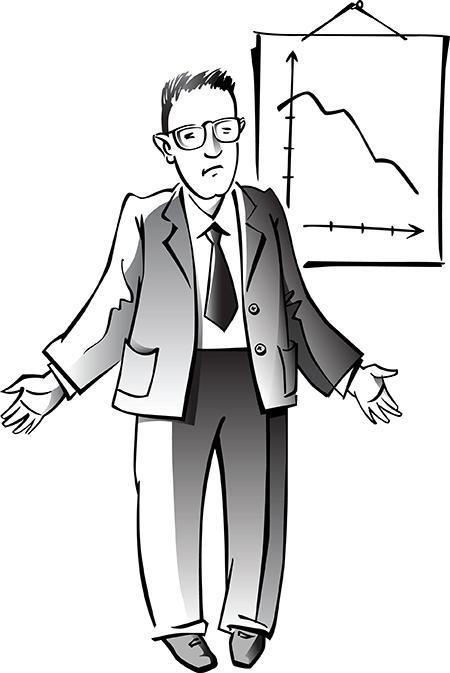
Mindful Investing 101: Understanding Risk
I often stare at my Vanguard account with fear and uncertainty. A bad combination for anybody looking to invest their money, because fear and uncertainty are the emotional states that drive people to make stupid decisions with their money. I am not immune to this. Nor is Kathleen. Collectively, we have made a series of bad money decisions that have cost us lots of future returns (Though, sometimes the lessons you learn from the deep introspection of awful decisions leads you to make better choices going forward. It’s basically the reason Frugal Portland exists. You could argue this is a net gain). But even now, when we are focused on making mindful decisions about our money, there is one unavoidable component of investing that nobody is immune from: risk.
Risk, that paralyzing toxin, is a fundamental reality of investing. Or, I suppose, of life if you want to get philosophical. In the finance world, risk means “you could lose your money.” This is scary,because nobody wants to lose money. We are risk averse. So, if you’re risk averse, but investing carries risk, how do you stay away from this paradox?
The short answer: you don’t.
Every money decision you make has risk. Even keeping money in your bank carries risk. Investing mindfully means minimizing risk while earning as much money in investments as possible. The problem is risk and returns are more or less proportional. In other words: the less risky the investment, the less money you stand to earn.
It’s better to understand risk in the context of investment, because while you can’t avoid it, you can be mindful about the risks you take.
Risk, the US Economy, and the Stock Market
Historically, stocks have been on a (very bumpy, but) unstoppable march upwards for over 100 years. Through the Great Depression, the dot-com bubble, the mortgage crisis, up, up, up. Just last month, the Dow Jones Industrial Average hit an all-time high. It is almost a religious doctrine in the personal finance world that you should invest in the market via low-cost index funds. And if you do that, you’ll probably be much richer in the long run than if you made any other decision. Probably. Because there’s still risk involved.
First, and most obvious, it’s possible that the time you want to tap into your investment nest egg happens to coincide with a downward slide of the market. There’s nobody in the world that can tell you what the value of the market is going to be at the end of this year, much less 30-40 years down the road. Anyone who tells you otherwise is either lying or selling you something, usually while lying.
People have different views of what the US economy will look like in the future. If you believe the long-term health of the economy is going to be good, that we are in a prosperous time where wealth the world over will continue to grow, then investing in the market is the way to go. If you think the era of US economic dominance is coming to an end, and stagnation is the long-term reality, then you are probably more comfortable in other investment vehicles. If you believe the end of the world economic order is nigh, then you might consider investing in a post-apocalyptic store of supplies for your bomb shelter.
Regardless, these are little more than guesses. The point is your opinion should guide your behavior, even then understanding that you might be wrong. This is the essence of risk.
How Interest Rates Indicate Risk
As a general rule, the higher the interest rate, the riskier the investment. Take credit card companies, for example. They are investing by extending credit to consumers, who are permitted to borrow money at interest rates in the neighborhood of 20%. This is not some plot by evil hucksters trying to take advantage of people. The interest rates are high because there’s nothing the company can do if somebody refuses to pay. Sure, it ruins your credit, but that’s not really helping Chase or Capital One much.
Conversely, interest rates for car loans are much lower. Why? Because the car acts as collateral for its loan. In the event a borrower doesn’t pay the loan back, the company can at least recover some of its value by repossessing the car.
That’s all well and good for the consumer side, but what about the investor side? Interest rates are tied to bond investments. Poke around in the bond market and you’ll find tiny interest rates among US government bonds: 10-year bonds are 2.5% and 1-year bills are at a microscopic 0.08%. Bank CDs are also mind-numbingly low because the CDs are guaranteed by the FDIC.
Go to a peer-to-peer lending organization like Lending Club, and the interest rates are through the roof, some over 25%. Sounds like an amazing return on your investment, but the astronomical returns should indicate that your money is on shaky ground. You are giving out unsecured loans to strangers basing their credit history on unverified information. Does that mean you shouldn’t invest in P2P lending? Well, not necessarily, but be aware that the risk exposure here is extreme.
The Risk of Not Investing
Oddly, sticking your money a bank account is risk, too. Not in the way you might think, though. The money amount in the account won’t shrink. But it will lose value for two reasons: the time value of money and opportunity cost.
Time value of money means that a dollar next month is worth less than a dollar today. Now, you probably won’t feel the value of a single dollar go down in a month directly (it’s a tiny amount), but believe me, the cash sitting in your account is losing value.
Opportunity cost is the value you could have earned if you had done something different. Let’s say Kelly and James have $1,000 each. Kelly puts her money in an index fund that returns an average of 7% annually while James keeps his in a no-growth checking account. In 10 years, Kelly’s money will have doubled, but James’s money remains the same. James essentially cost himself $1,000. Making things worse, that amount of money is worth less than it was ten years ago.
Ouch.
Don’t Let Risk Paralyze You
There are, of course, other forms of risk. The market isn’t the only unpredictable factor; tax ratess are unpredictable, too. The top marginal income tax rate in 1984 was around 50%. In 1974, it was around 70%. Maybe you have it in mind that those rates could be back in another 30 years.
What if the government goes alters the laws? Sure, Roth IRA earnings can be withdrawn tax free… in 2014. But all it takes is an ill-time budget crisis and some federal legislators to amend the law, and suddenly you’re double taxed. Or worse: what if Congress decides to nationalize retirement accounts (don’t laugh, Argentina did it in 2008)?
I’m not trying to prop up pessimistic worldviews, but I know people who think some (or all) of the above are distinct possibilities.
But while you’re afraid of things that might happen, doing nothing only guarantees that you will lose out on building your own future.
Whatever your opinion of the future may be, there are strategies for pessimists and optimists alike, so make sure to act accordingly. Just know: you might be right, you might be wrong, you might be lucky or unlucky. Nobody knows for sure, and that uncertainty is why we have risk.
It’s really anybody’s guess.

